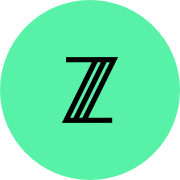PowerForward
My Role
I was the product designer for PowerForward, which is a video-based leadership-development program. My primary responsibility was the redesign of the product, which could be best thought of as an experience similar to the Choose Your Own Adventure book series.
The Lesson
The crux of the product was each lesson’s interaction. A user was prompted to make a choice within a binary decision. They would enter their typed explanation from the POV of the interviewed business leader.
The Problem
Our CEO saw an opportunity to repurpose the product and sell it directly to individuals via our marketing site.
How could we build an individual program on the back of a team-based product?
Taxonomy & Version Control
To create a course for individuals, we broke the product into three distinct versions. The B2B program would remain untouched, under the name Version 1.0. The B2C course would be known as Version 1.5.
Anything that was not a priority would be phased for a future rebuild under the name Version 2.0.
Feature Prioritization
I applied feedback from user interviews to the design of our Individual program.
In the B2B version, users were having trouble with the Reflection and Team Discussion portions of the program. Our developer turned off this feature for the new design.
User Flow
This new user flow represents the ideal user flow of an individual clicking through a Lesson.
Course Screen
The aesthetic of Version 1.5 could be elevated, but I had to be reasonable in applying design changes, and be specific in handing off to our developer.
For example, the lesson screen had to incorporate nearly all of the elements from Version 1.0, without breaking any of the underlying code.
Design Document
The developer and I evolved a design document that included a style guide to rely on. It was invaluable, given the fact I was in New York and he was in California.
We started off designing the marketing site using seven different screen sizes. While great for accuracy and overall user friendliness, we were hurting ourselves in terms of time spent.
We eventually whittled it down to three screen sizes and paved the way to a smoother process. Adjustments like these helped speed up our progress.
Copy of Design Process
Two big changes to the marketing site templates we designed and developed were the increase of the overall grid (allowing bigger margins, and the transition designing seven screen sizes to three.











